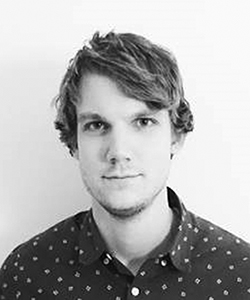
Description:
This workshop will explore the different aspects related to the design of a bending-active gridshell with an emphasis on using Kangaroo2 and K2Engineering as interactive form-finding and analysis software. The design process includes the development of an architectural concept, creating small scale models, form-finding, loading analysis, structural design verification, fabrication strategy and eventually assembly of a full-scale prototype.
Bending-active gridshells are notoriously difficult to analyse due the large deformations involved to obtain the shape and the pre-stress that is introduced by this action. This workshop will provide an overview of the theoretical background behind Kangaroo2 and how this tool can help to simulate the behaviour of gridshells in an interactive environment such that many design iterations can be explored. It will cover the recent expansion of Kangaroo2 from a 3 DOF to 6 DOF system, which means that rotations can now be described as well. This improvement is particularly interesting for gridshells because it enables the simulation of biaxial bending and torsion rather than using a simplified model, which is only accurate for circular cross sections. The idea is therefore to implement this functionality and use timber as material for the gridshell.
Expected Skill Level : Familiarity with Rhino, Grasshopper and Kangaroo2
Requirements: Laptop with Rhino, Grasshopper and Kangaroo2 installed
Tutors:
Daniel Piker, Emil Poulsen, James Solly, Cecilie Brandt-Olsen




Bio:
Daniel Piker is a researcher on the use of computation for design and realization of complex forms and structures. After studying architecture at the AA, he has worked as part of the Advanced Geometry Unit at Arup, and currently for the Specialist Modelling Group at Foster+Partners. He is the developer of Kangaroo and Kangaroo2.
Emil Poulsen is a Structural Engineer and Applications Developer working for Thornton Tomasetti’s R&D department CORE studio based in New York City. With a background in architecture, engineering and coding, Emil holds a double Master’s degree in Architecture and Urban Design (M.Arch.), and Structural Engineering and Building Performance (M.Sc.) from Chalmers University of Technology. His area of research includes complex timber design and simulation methodologies for actively bent gridshells, with a special focus on the
implementation of the Dynamic Relaxation algorithm using a 6 DOF formulation. Emil is the founder of plsndesigntech.com, a consultancy which focuses on the employment of programming in design and in the building industry. This includes consultancy services related to computational and architectural design, but do also development of software and plugins.
James Solly is a structural engineer and a chartered member of the Institution of Civil Engineers. He is currently working as a Research Associate at the Institute for Building Structures and Structural Design (ITKE) at the University and is additionally a Marie-Curie Fellow working within the Innochain ETN Network and a tutor on the ITECH M.Sc. Programme. His research focuses on the development of virtual prototyping strategies for optimised, fibre-reinforced polymer (FRP) architectural lattice structures. This work has led to his involvement in two major research demonstrators, the Elytra Filament Pavilion (Victoria and Albert Museum, London, 2016) and the ICD/ITKE Research Pavilion 2016-2017 (University of Stuttgart, 2017).
Cecilie Brandt-Olsen joined BIG (Bjarke Ingels Group) in the beginning of 2017 to be part of the start-up of an in-house engineering department called BIG Engineering. Here she works as a structural engineer specialised in computational design. In addition to this, she works on various kinds of projects of complex character ranging from buildings to sculptures in collaboration with Format Engineers. She holds a master’s degree in architectural engineering from The Technical University of Denmark and an MPhil in Digital Architectonics from The University of Bath. The relationship between geometry and structural performance has been one of her main focus areas during her studies. She is passionate about non- standard projects with a need to improve existing workflows and develop innovative solutions using cutting edge technology.
